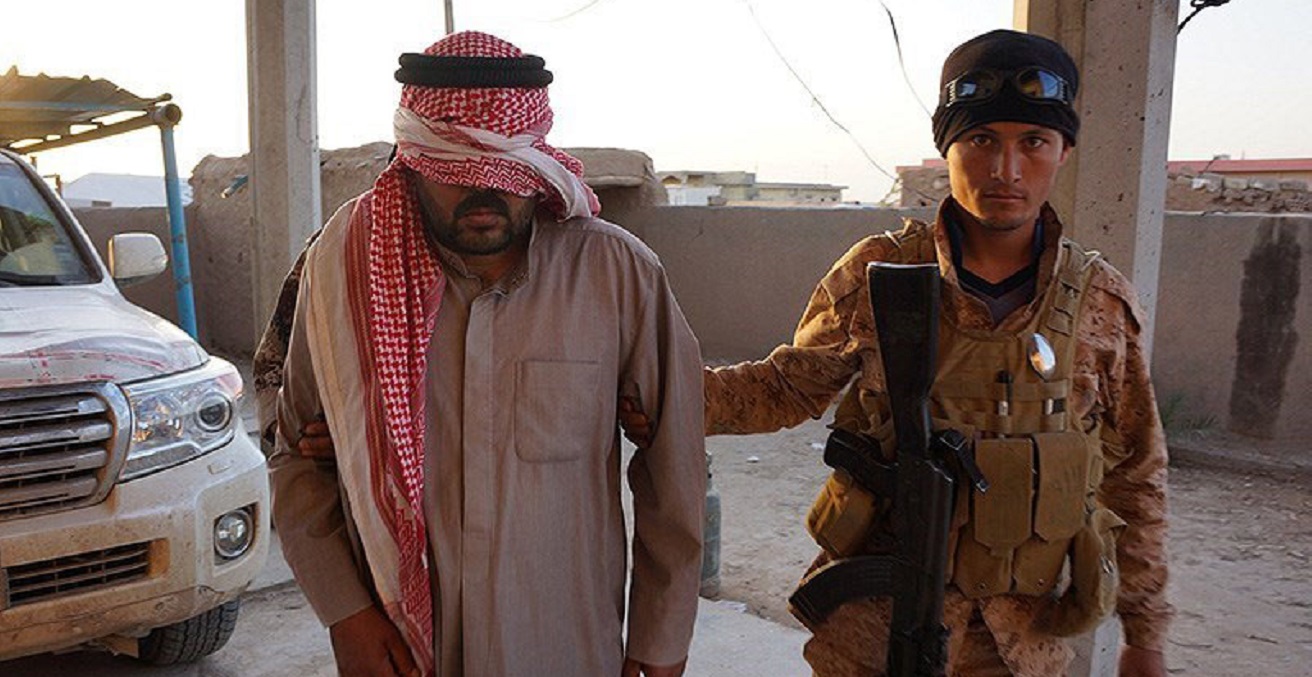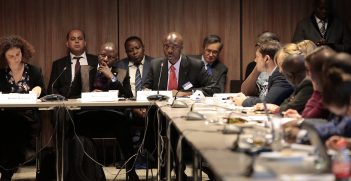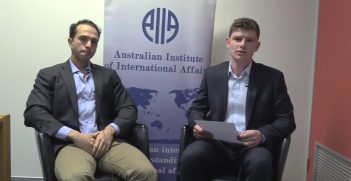A Reconstituted ISIS Surfaces in Syria

The knock-out punch was never delivered in the international campaign against Islamic State. Now it is emerging from the Syrian desert to fight on.
In December 2018, US President Donald Trump declared that the Islamic State had been defeated in Syria. Announcing that American troops would be coming home, he asserted, “We have won against ISIS.”
Yet, recent events suggest that, as with other Trump utterances, his declaration of the defeat of ISIS was premature and overly optimistic. For all of Trump’s bravado, ISIS never received a knock-out punch.
When ISIS entered the Syrian theatre of conflict in 2013, it turned an already complex situation into an intractable knot. Distaste for Bashar al-Assad and the depredations he visited upon the Syrian people was soon outweighed by horror at the blood-thirsty tactics of ISIS. Those advocating for Assad’s fall faced a dilemma as to how to respond.
Researcher on proxy wars Professor Andrew Mumford argues that with the advent of ISIS, Assad became “the lesser of two evils.” The decision was made in Washington, Mumford contends, that “Assad could stay if ISIS goes.” For all of Assad’s abuses against his own people, it was understood that if he was removed, ISIS would fill the power vacuum. That could not be allowed to happen, for the sake of the Syrian people and for the flow-on effects that would emerge from a jihadi entity ruling from Damascus.
Thereafter, Western efforts were concentrated upon the elimination of ISIS. But that goal was never seen to completion. Now, there are worrying signs that ISIS is re-constituting itself in Syria.
Since earlier this year, ISIS has stepped up its operations, with sleeper cells conducting hit-and-run operations in Syria’s east. Kurdish sources report that ISIS has targeted Arab tribal leaders, and members of the Kurdish-led Syrian Democratic Forces (SDF) as well as carrying out arson attacks in a campaign designed to destabilize the region. Such is the fear aroused by the reappearance of ISIS that some Arab tribes in Deir Ezzor have sought military protection from the SDF.
Indicative of its audacity and resurgent military capacity, ISIS claimed responsibility for the death of Russian Major General Vyacheslav Gladkikh, killed by a roadside improvised explosive device near Deir Ezzor in August this year. Russia responded with airstrikes against ISIS targets, but the jihadist group has gone on to intensify its attacks. The Syrian Observatory for Human Rights records ongoing clashes between ISIS and the Syrian regime.
The uptick in activity has been pronounced in and around Deir Ezzor on the Euphrates, with ISIS operating across an area stretching eastward to the Syrian-Iraqi border and along the Euphrates valley. The province of Deir Ezzor has been long neglected by the regime despite its agricultural resources and large population, and earlier campaigns to defeat ISIS resulted in enormous disruption to its economic and social fabric. It has proved fertile ground for ISIS in its re-emergence.
Significantly, ISIS has also been able to establish a foothold further west in Syria’s central Badiya region, where there are reports of ISIS training camps. From hideouts in the desert, cells have emerged to harass settlements on the M20 highway that links the storied city of Palmyra and Deir Ezzor.
Badiya has seen intermittent clashes between the regime and ISIS since mid-2017, when Damascus launched a major campaign to reclaim the region, including the main centre of Palmyra. Despite losing control of territory, ISIS immediately responded with insurgent attacks on regime targets.
Indeed, ISIS has proven highly resilient. In the face of massive pressure from the regime, Russian airpower, and from the US-led coalition, it has adopted new tactics. The idea of the “caliphate” may have been abandoned and ISIS’ central command may no longer attempt to hold territory, but it remains a potent force. Its highly mobile units conduct lightning operations and then melt back into the desert. Guerilla attacks against the regime continue across an expanding arc of territory that now extends north towards Raqqa and Aleppo and west towards Hama.
Operating primarily in what is ostensibly regime-held territory, ISIS remains a thorn in the side of Assad, rather than an international menace. The international coalition against ISIS has no jurisdiction in Badiya, thus it is for Damascus and its Russian allies to respond to the rising threat.
Some reports suggest that fighting on multiple fronts for so long has depleted Syrian regime forces such that they are in no position to defeat ISIS. Others argue that Russia, Assad’s strongest backer, has no effective strategy against a terrorist insurgent entity like ISIS.
In Syria, ISIS faces an array of foes – Assad, Russia, the Turkish armed forces, Iranian-backed militias, the US-led coalition and its proxies – but it seems able to endure. At the same time, anti-ISIS forces fail to present a united front and never strike the final blow. With each undertaking disparate military strategies in pursuit of their own geopolitical goals, none appears willing to commit to resolving the socio-political problems that bedevil Syria. Meanwhile the conflict drags on and the Syrian people are yet to find stability.
As the International Crisis Groups notes, if concerted effort were made by those pitted against ISIS, any resurgence could be cut short. Such cooperation remains highly unlikely. The sheer number of involved parties – with multiple international actors sponsoring numerous factions on the ground – makes the conflict all the more intractable.
Trump’s pre-emptive announcement of victory reflects his desire to extricate US troops from the Middle East, which in turn echoes a broader American aversion to entanglements in the region. In this sense, as Andrew Mumford observes, America’s failures in Iraq hang over its efforts to quash ISIS. Unwilling to put boots on the ground, the US had to tackle ISIS at arm’s length, primarily through Kurdish-led forces.
Meanwhile, America is reluctant to cede its position in the Middle East to Russia, which continues to prop up the Assad regime, but Washington is equally averse to becoming further trapped in ongoing wars.
Few shared Trump’s optimism as he made his victory speech almost two years ago. Most understood that the job was never finished. Those who had earlier weighed up the benefits of either removing Assad or eliminating ISIS have lost on both counts. ISIS is not the international threat that it once was but it is back, and Assad remains ensconced in power. Neither situation bodes well for the Syrian people.
Dr William Gourlay is a Research Associate at the Middle East Studies, Deakin University and is the author of The Kurds in Erdogan’s Turkey (Edinburgh University Press). He tweets @GourlayWill
Professor Shahram Akbarzadeh researches Middle East & Central Asian Politics at the Alfred Deakin Institute for Citizenship and Globalisation (Deakin University), and is the convenor of Middle East Studies Forum. His latest publication is Routledge handbook of international relations in the Middle East (2019). @S_Akbarzadeh.
This research was facilitated by Carnegie Corporation New York (Grant number: G-18-55949): “Assessing the impact of external actors in the Syrian and Afghan proxy wars.”
This article is published under a Creative Commons Licence and may be republished with attribution.





